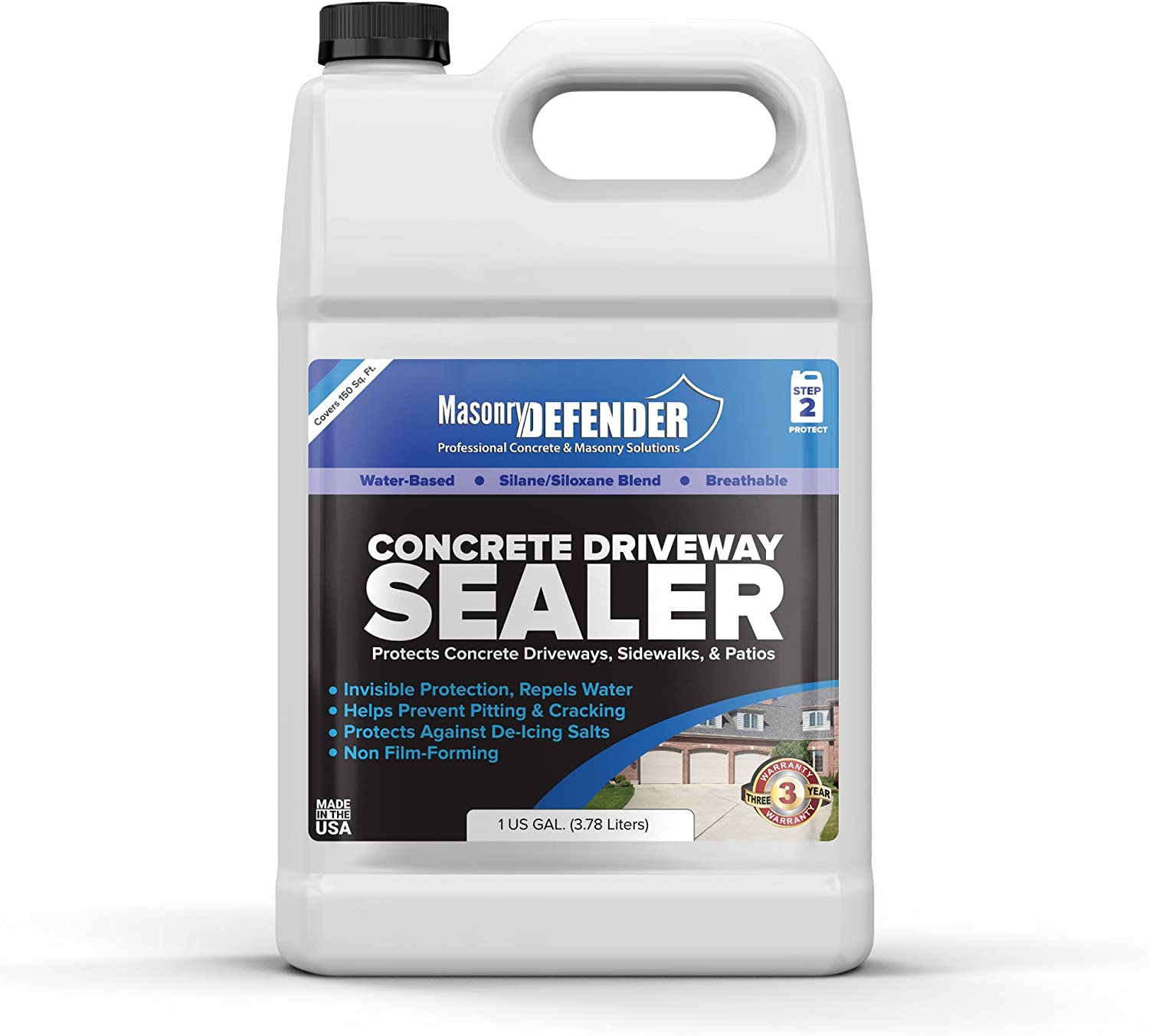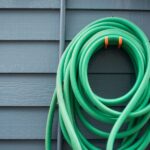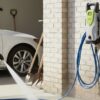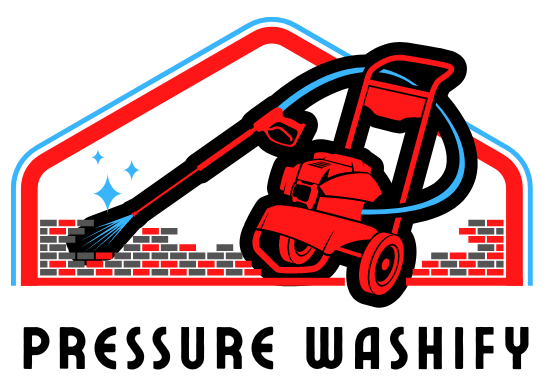Affiliate Disclaimer: This post may contain affiliate links, meaning we get a commission if you decide to make a purchase through our links, at no extra cost to you.
The general rule is to wait at least 24 hours after pressure washing before sealing your concrete. This gives the surface enough time to dry completely.
However, it’s important to note that the drying time can vary depending on a few factors, such as the weather conditions and the porosity of the concrete.
The Benefits of Pressure Washing Concrete Before Sealing
Pressure washing has become an increasingly popular method for cleaning concrete surfaces and for good reason. It helps to prepare the surface for sealing.
Improved Aesthetics
Pressure washing can dramatically improve the appearance of your concrete surfaces by removing years of accumulated dirt and grime.
This is especially important if you plan to sell your home or simply want to maintain its curb appeal.
A clean and well-maintained surface will create a positive impression on potential buyers and visitors alike.
Enhanced Surface Preparation
Sealing a dirty or contaminated concrete surface can lead to poor adhesion, which may cause the sealer to fail prematurely. Pressure washing helps to remove contaminants and ensures that the sealer will bond properly to the surface.
This not only improves the longevity of the sealer but also enhances its protective capabilities.
Increased Sealer Performance
Pressure washing your concrete surface before sealing opens up the pores of the concrete. This allows the sealer to penetrate deeper.
This increased penetration leads to better protection against moisture, chemicals, and other potential sources of damage.
Reduced Maintenance
A properly cleaned and sealed concrete surface requires less maintenance than an unsealed one. The sealer serves as a protective layer.
It prevents dirt, grime, and stains from settling on the surface. This makes cleaning easier and reduces the need for frequent pressure washing.

Factors to Consider
The general rule of thumb is to wait 24 hours after pressure washing before sealing concrete. However, this waiting period can vary depending on several factors.
Weather Conditions
The prevailing weather conditions can significantly influence the drying time after pressure washing. High humidity, low temperatures, and rain all prolong the drying process.
On a sunny, warm day, the concrete surface may dry within 24 hours, but it might take 48 hours or more in cooler, damp conditions.
Always check the weather forecast and try to plan your pressure washing and sealing project during dry, warm weather.
Concrete Porosity
The porosity of the concrete surface also affects the drying time. Highly porous concrete absorbs water quicker, so it will take longer to dry completely.
In such cases, you may need to wait more than 24 hours before sealing the surface. On the other hand, if your concrete surface is less porous, it may dry faster, allowing you to proceed with sealing sooner.
Type of Sealer
Different types of concrete sealers have varying drying times and application requirements. Some sealers can be applied to slightly damp surfaces, while others require the surface to be completely dry.
Always refer to the manufacturer’s instructions for the specific sealer you’re using to ensure proper application and drying times.
The Water Test
As mentioned earlier, you can perform a simple water test to determine if your concrete surface is ready for sealing.
- Sprinkle some water onto the surface
- Observe how quickly it gets absorbed
- If the water beads up and sits on top of the concrete, it’s not ready for sealing yet
- But if the water gets absorbed quickly, you can proceed with sealing
The Surface’s Appearance
Another way to determine if your concrete surface is dry enough for sealing is to observe its appearance. A dry surface will appear lighter in color than a damp surface.
If your concrete surface seems uniformly fair in color, it’s likely ready for sealing.
Tips for a Successful Sealing Process
Achieving a flawless, long-lasting seal requires attention to detail and adherence to best practices.
Choosing the Right Type of Sealant for Your Surface
Selecting the appropriate sealant is critical for achieving the desired results. Numerous types of sealants are available in the market, each designed for specific surfaces and applications.
To choose the proper sealant, consider the surface material, durability requirements, and the area’s exposure to elements.
For concrete surfaces, choose a sealant that provides excellent adhesion and resistance to wear and tear.
Properly Preparing the Surface Before Sealing
A well-prepared surface is the foundation of a successful sealing process. Before applying the sealant, ensure the surface is clean, dry, and free of debris, dust, or contaminants.
You can use a broom, vacuum, or pressure washer to clean the area thoroughly. If needed, treat the surface with a mildewcide or fungicide to eliminate any mold or mildew growth.
Repair any cracks, chips, or holes in the surface to create a smooth and even base for the sealant. Finally, allow the surface to dry completely before proceeding with the sealing process.
Read more on how to fix concrete damage.
Ensuring Optimal Weather Conditions for Sealing
Weather conditions play a significant role in the success of the sealing process. Ideally, the weather should be dry and mild.
The temperature should range between 50°F and 90°F, or 10°C and 32°C.
Avoid sealing during extreme temperatures, as it can negatively impact the sealant’s adhesion and curing process.
Additionally, refrain from sealing when rain is in the forecast, as moisture can compromise the integrity of the sealant.
Avoid direct sunlight and strong winds. These can cause the sealant to dry too quickly. This can result in an uneven finish.
Our Recommended Concrete Sealer
MasonryDefender concrete sealer is an excellent choice for anyone looking for a top-quality sealer that offers long-lasting protection for their concrete surfaces.
- Water-repellent.
- Protects against freeze-thaw damage.
- Maintains the natural appearance of concrete.
- The lifespan of up to 5 years.
- Easy application
- 3 years warranty.
We highly recommend MasonryDefender concrete sealer for anyone looking to protect their concrete surfaces from moisture and other environmental elements.
MasonryDefender Penetrating Concrete Sealer for Driveways, Patios & Sidewalks

- Siloxane Based
- Eco-friendly
- Clear Color
- 1-gallon Can
How to Apply Concrete Sealer?
- Select an appropriate concrete sealer based on the surface and desired finish.
- Pressure wash or clean the concrete thoroughly.
- Wait 24 hours for the surface to dry completely.
- Follow the manufacturer’s instructions for mixing or preparing the sealer.
- Use painter’s tape or plastic sheeting to protect adjacent areas.
- Apply the sealer evenly using a roller, brush, or sprayer, avoiding puddling.
- Allow the sealer to dry according to the manufacturer’s recommendations.
- If needed, apply multiple coats with appropriate drying time between each coat.
- Remove painter’s tape or plastic sheeting once the sealer is fully dry.
- Allow the sealer to cure before allowing foot or vehicle traffic on the surface.
Conclusion
Knowing how long to wait to seal concrete after pressure washing is critical for ensuring a successful and durable seal.
By allowing the surface to dry thoroughly, typically for 24 hours or more, you can achieve optimal adhesion and performance of the sealant.
Factors such as weather conditions, the type of concrete, and the specific sealant being used should also be considered when deciding how long to wait to seal the concrete after pressure washing.
FAQs
Q1: Why is it important to seal concrete after pressure washing?
Ans: Sealing concrete after pressure washing is essential for protecting the surface from water penetration, stains, and damage caused by weather conditions. It also enhances the appearance of the concrete by giving it a clean and polished look.
Q2: Can I apply sealer to damp concrete after pressure washing?
Ans: Applying sealer to damp concrete is not recommended, as it can lead to poor adhesion and potential sealer failure. Always wait for the surface to dry completely before applying a sealer.
Q3: What type of sealer should I use for my concrete surface?
Ans: Various types of concrete sealers are available, including acrylic, epoxy, and penetrating sealers. The choice of sealer will depend on factors such as the type of concrete, the desired finish, and the level of protection required.
Q4: What happens if I over-apply sealer on my concrete?
Ans: Over-application of sealer must be avoided at all costs. It can lead to cracks in your concrete. Always read the manufacturer’s recommendation to check how many layers of sealer you can apply safely.
Q5: How much time do I need to seal my driveway?
Ans: An average-sized driveway can take between 20 – 30 mins to apply sealer.
Q6: When will I need to re-apply the sealer?
Ans: It depends on the type of sealer you have applied, however generally the sealer needs to be re-applied after every 1 to 5 years.









